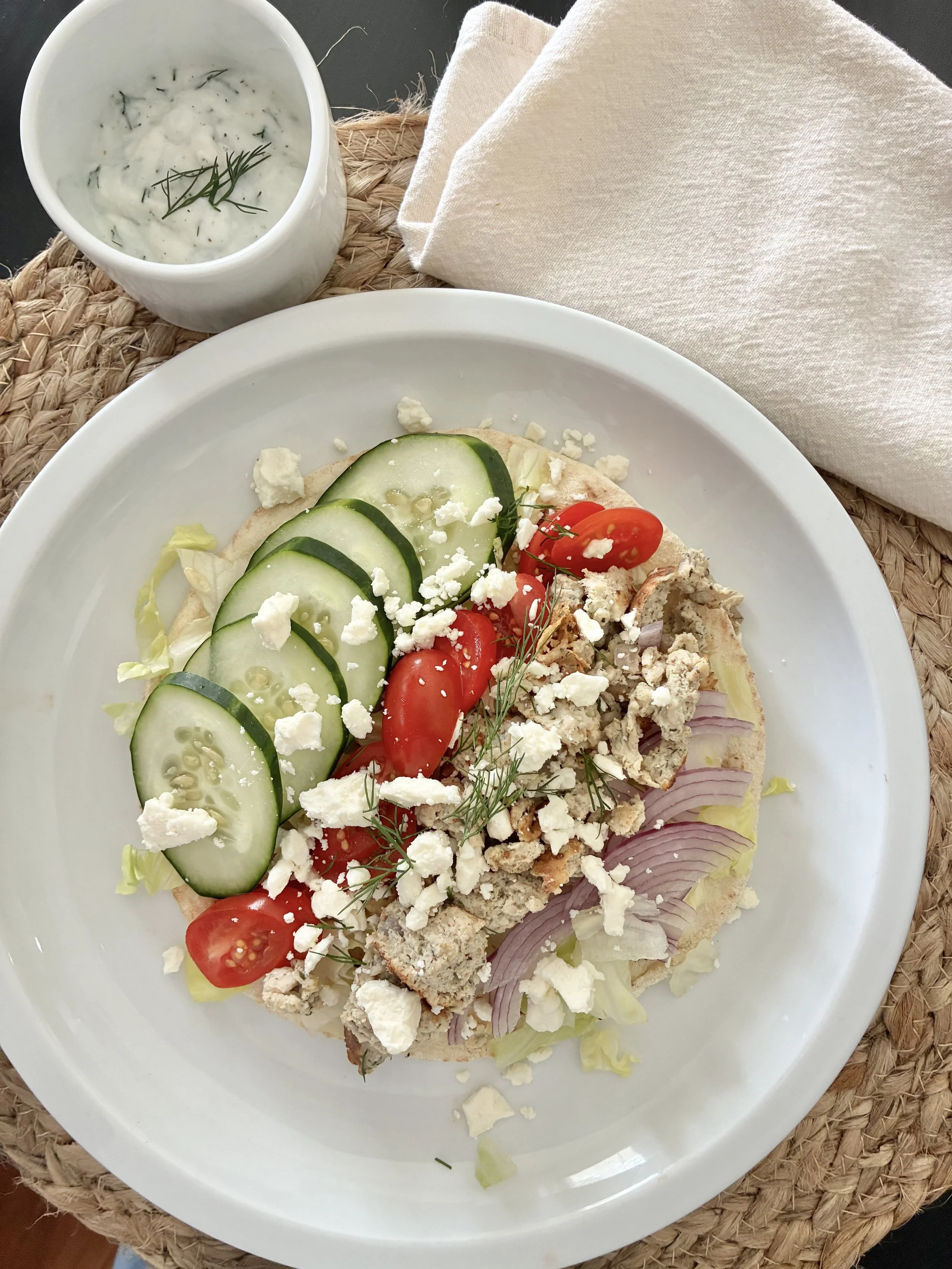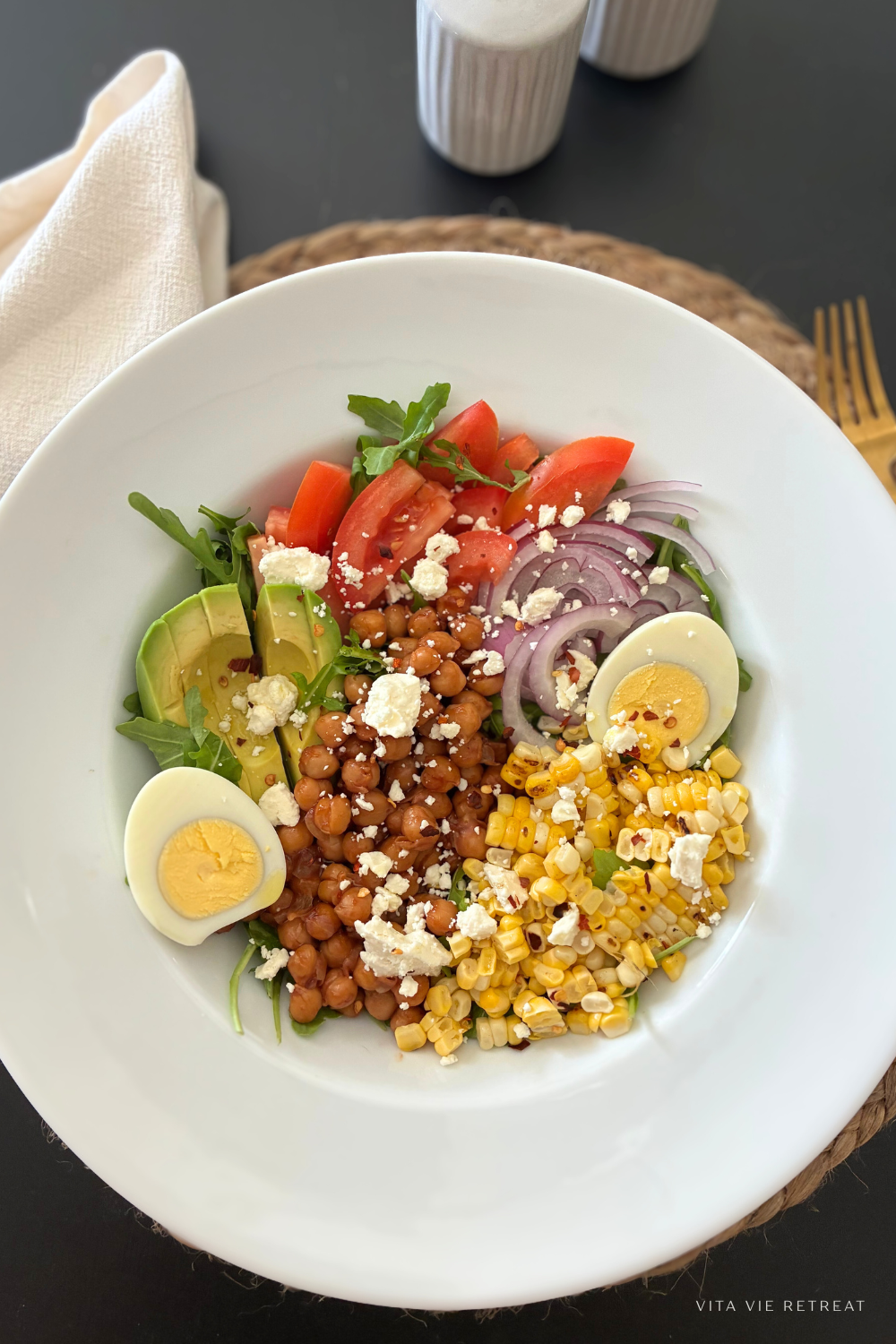How to Eat for Success on GLP-1 Medications: Protein, Hydration & Meal Timing
/GLP-1 medications like Ozempic, Wegovy, and Mounjaro have become increasingly popular tools for supporting weight loss and managing blood sugar. These medications work by slowing gastric emptying, reducing appetite, and increasing insulin secretion. While they can be incredibly effective, they are not magic bullets. Relying solely on a GLP-1 without supporting it with proper nutrition and healthy lifestyle habits can lead to muscle loss, poor energy levels, and difficulty maintaining results once the medication is stopped.
To truly succeed on a GLP-1, it’s essential to pair the medication with smart dietary choices and intentional habits. This post explores how to optimize your nutrition while using these medications, focusing on protein intake, hydration, meal timing, low-glycemic eating, sugar reduction, mindful eating, and lifestyle support.
Why Diet Still Matters on A GLP-1
Even though GLP-1s curb appetite and may lead to effortless calorie reduction, your body still needs high-quality nutrition to function well. Many users unintentionally eat too little, skip meals, or rely on ultra-processed low-calorie snacks—especially when hunger signals are dulled. This can lead to fatigue, nutrient deficiencies, and loss of lean muscle mass, which slows metabolism over time.
The goal is to use your reduced appetite as a tool to create better eating habits—not as a reason to skip nutrition altogether. This is your opportunity to reset your relationship with food in a sustainable way.
If you’d rather skip the guesswork, we put together the GLP-1 Diet Blueprint for Weight Loss & Wellness to make it simple — but first, let’s dive into the strategies you can start with today.
Prioritize Protein: Preserve Muscle, Stay Full Longer
Protein is non-negotiable on GLP-1 medications. Without enough protein, weight loss often includes a significant portion of muscle loss, which isn’t ideal for metabolism or long-term health. Muscle burns more calories at rest and supports strength, mobility, and quality of life.
Aim for 25–30 grams of high-quality protein per meal, depending on your needs and body size. Include lean meats, eggs, fish, Greek yogurt, cottage cheese, tofu, tempeh, and protein shakes as convenient options. Especially if you’re eating less overall, every meal should count.
Not only does protein help preserve lean mass, but it also supports satiety—keeping you full longer and helping regulate blood sugar levels.
Hydration: Small Sips, Big Impact
GLP-1s slow gastric emptying, which means your stomach empties food and liquid more slowly than usual. Dehydration is a common side effect, and it can sneak up on you—especially when you're eating less or consuming fewer water-rich foods.
Make hydration a habit. Aim for at least 64 oz of water per day, more if you're active. Since large gulps may cause nausea, sip slowly throughout the day. Add electrolytes if you're experiencing headaches, lightheadedness, or fatigue. Herbal teas and flavored water without added sugars are also great options.
Meal Timing: Regular, Balanced, Intentional
It might feel tempting to skip meals when your appetite is low, but doing so can lead to unstable energy, blood sugar crashes, and increased risk of overeating later. It’s important to develop a rhythm that supports your body, even if you're eating smaller portions.
Aim for 3 balanced meals per day, spaced out every 4–5 hours. Some people may do well with two meals and a snack. The key is consistency—creating a routine that nourishes your body, even in small amounts.
Every meal should be balanced with protein, healthy fat, and fiber-rich carbohydrates. This balance helps reduce blood sugar spikes and promotes long-lasting energy.
Low-Glycemic Foods: Steady Energy and Blood Sugar
One of the best dietary shifts you can make on a GLP-1 is to focus on low-glycemic, whole foods. These foods digest slowly, promote satiety, and help avoid dramatic blood sugar swings.
Low-glycemic choices include:
Non-starchy vegetables (spinach, broccoli, zucchini, peppers)
Whole grains (quinoa, oats, barley)
Legumes (beans, lentils, chickpeas)
Fruits with skin or seeds (berries, apples, pears)
Nuts and seeds
Avoid or limit refined carbs and sugary foods like white bread, sugary drinks, pastries, and sweetened snacks. These can cause rapid blood sugar spikes followed by energy crashes and cravings.
Get our GLP-1 Recipe Bundle for Low Glycemic, GLP-1 friendly recipes and meal plans!
Go Sugar-Free (From Added Sugars)
Reducing added sugars can support both weight loss and overall health. Natural sugars found in whole fruits and dairy are fine in moderation, but watch out for sneaky sources of added sugar in sauces, yogurts, cereals, and drinks.
Use labels to your advantage and look for:
“No added sugar”
Less than 5g total sugars per serving (for packaged foods)
Natural sweeteners like stevia or monk fruit as needed
Sugar alternatives are helpful for some, but aim to reset your palate by focusing on real, fresh foods. The fewer added sugars you consume, the more your tastebuds will adapt to appreciate natural sweetness.
Tune In: Mindful Eating & Listening to Your Body
GLP-1 medications alter appetite signals, so mindful eating becomes essential. With less hunger, it's easy to ignore the need for nourishment, skip meals, or eat out of boredom or habit.
Try to eat when your body needs fuel, not just when it feels like it. Likewise, stop eating when comfortably full, even if there’s food left on your plate. Slowing down, chewing thoroughly, and tuning in to how foods make you feel are key strategies that promote a healthier relationship with food.
Questions to ask yourself:
Am I hungry or just bored/stressed?
How does this food make me feel after I eat it?
Am I eating enough to feel nourished?
Build Strong Habits: Move, Sleep, De-Stress
Your success on a GLP-1 isn’t just about what you eat—it’s also about how you live.
Exercise: Incorporate strength training 2–3 times a week and regular walks or low-impact cardio. Movement supports metabolism, mood, and muscle preservation.
Sleep: Aim for 7–9 hours per night. Poor sleep can sabotage weight loss and increase cravings.
Stress Management: Chronic stress raises cortisol, which can make it harder to lose weight and feel good. Use breathing techniques, journaling, yoga, or quiet time to unwind daily.
These habits not only support your results but also help you transition successfully off the medication if and when that time comes.
A Lifestyle, Not a Shortcut
GLP-1 medications can be powerful tools in your health journey, but they are most effective when paired with intentional eating and consistent self-care. Your food choices, daily habits, and mindset are what truly shape long-term success.
Use this season as an opportunity to build a lifestyle that works for you—nourishing your body with real food, staying hydrated, eating with purpose, and reinforcing habits that keep you feeling your best. GLP-1s may help jumpstart the process, but your daily choices will determine how far you go and how well you feel getting there.
More To Explore: Your Next Steps
Ready to take it a step further? Here are a few resources to keep the momentum going:
📌 Related Posts
✓ Done-for-You Guides
The GLP-1 Lifestyle Blueprint → your complete system for GLP-1 success (all in one place)
The GLP-1 Recipe Bundle → a full recipe bundle formulated specifically for GLP-1 users
SAY HELLO TO YOUR GLP-1 DIET COMPANION
Ready for a complete done-for-you program that sets you up for success? Grab the GLP-1 Blueprint today and get all of the tools and support you need for sustainable success.






















